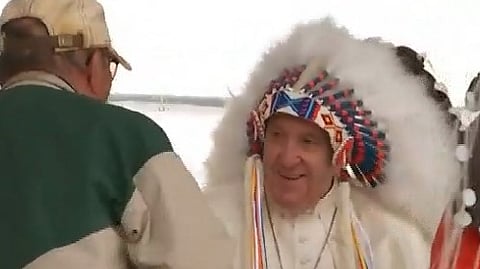

The British Columbia First Nation that publicly claimed to have located unmarked graves at a former residential school asked for a papal visit to the site, according to internal government records obtained through Access to Information.
Blacklock's Reporter says meeting minutes from the Tk’emlups te Secwepemc First Nation show council members urged Pope Francis to visit the former Kamloops Residential School after they became “the first to announce unmarked graves.”
The request was made during a February 23, 2022 meeting with then-indigenous services minister Patricia Hajdu.
Minutes recorded by a federal staffer quote council members saying the First Nation had a “leadership duty on behalf of other communities” because of its role in making the initial graves announcement.
The council said it was “pleased with the response” from Hajdu’s department to its funding requests and had extended an invitation to the Pope to visit Tk’emlups.
The minutes also noted Prime Minister Justin Trudeau’s earlier visit to the site, during which the community shared its desire for a healing centre, an elders’ lodge, upgrades to its museum, and designation as a national historic site.
While Pope Francis visited Canada in the summer of 2022, his itinerary did not include British Columbia.
Instead, he met former residential school students in Maskwacis, Iqaluit, and Québec City, where he apologized for the church’s role in the residential school system.
“The memory of those children is indeed painful,” the Pope said at the time. “It urges us to work to ensure every child is treated with love, honour and respect.”
Despite receiving $12.1 million in federal grants to support what was described as “ancestral remains excavation,” the Tk’emlups council has not conducted any excavation or recovered any remains.
The funding was intended for DNA analysis, coroner services, and archaeological work. Instead, records show the money was spent on public relations, consulting fees, speaking honorariums, and unspecified administrative costs.
On February 12, Parks Canada designated the Kamloops Residential School a national historic site. The designation statement made no reference to any graves.
“The Kamloops Indian Residential School was the largest institution in a system designed to carry out what the Truth and Reconciliation Commission described as cultural genocide,” read the Parks Canada statement.
It added that while other former school sites across several provinces have also received historic status, “the possibility of unmarked burials is not a determining factor.”
